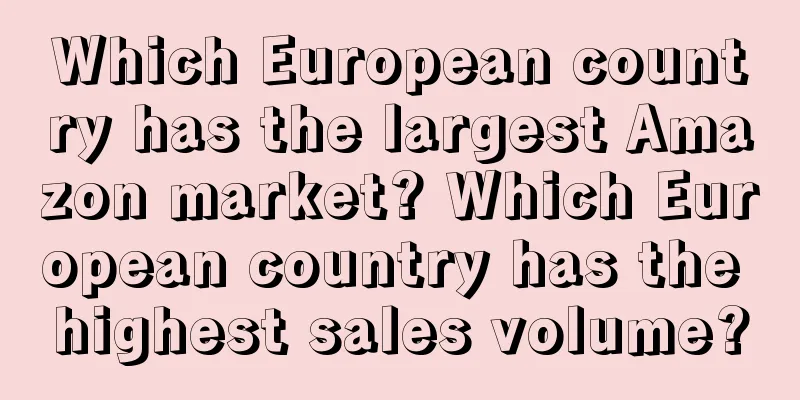Is Focus Media old? | 5000 words to reread the value of elevator media

On April 29, Focus Media released its 2023 annual report and the first quarter report of 2024. In 2023, the company's operating performance achieved a significant year-on-year growth, with revenue reaching 11.904 billion yuan, a year-on-year increase of 26.3%. The performance looked good, but the market was not convinced. The stock price of Focus Media fell 7% the day after the release of its financial report. As of press time, Focus Media's stock price has not yet recovered to the level before the financial report was released. To understand the reasons, we must first figure out what Focus Media’s biggest problem is. I think that Focus Media is currently at a very mature stage: the technology of its advertising products is upgrading slowly, its advertising model is too traditional , and its performance cannot achieve a second explosion. And this problem remains unsolved in the near future, which in turn suppresses the market's confidence in Focus Media. I plan to discuss this issue from three aspects: product, advertising model and audience. 1. First of all, there are Focus Media’s advertising products.In May 2003, Mr. Jiang founded Focus Media in Shanghai, ushering in the era of elevator media advertising. Up to now, Focus Media has been around for 21 years. However, the entire advertising product has not undergone any substantial upgrade and is still LED screen + poster. Posters are the traditional form of outdoor advertising, there is nothing much to say about it. The most imaginative one is the LED screen, because once the technology of the LED screen is upgraded, it may bring about a qualitative change in inventory and advertising efficiency. In 2011, against the backdrop of the O2O entrepreneurial boom and the fierce competition among group-buying websites, Focus Media launched the Focus Interactive Screen: Simply put, three small interactive screens are added under the large advertising screen. Consumers can get a free induction card. After getting the card, they can send a text message to a designated number to activate it and bind it to their mobile phone. When consumers are interested in an advertisement on the small interactive screen, they only need to swipe the induction card close to the RFID sensing area of the LCD screen, and the relevant information in the advertisement will be sent to the mobile phone in the form of text messages, and the text message information can be used as a basis for discounts or delivery. This is a very ambitious advertising product. Jiang Nanchun himself once revealed that he had seen that "the shift from brand orientation to promotion orientation is a very obvious trend." Focus Media hopes to obtain sales expenses from companies, not just advertising fees. Because the brand advertising fee pool is limited, and sales expenses are directly linked to sales volume, they not only include advertising fees, but also the costs of promotional activities such as coupons, discounts, gifts, supermarket promotions, and points rewards. The budget ceiling for this part is higher. In fact, Taobao earns money from sales, not just advertising. With the help of closed-loop businesses such as e-commerce and lifestyle services, Douyin has also moved from earning advertising fees to earning money from sales. But ultimately the interactive screen was not very successful. Firstly, the process is too complicated, requiring an induction card, SMS activation, and mobile phone binding. The overly long link will easily lead to a large number of user losses at each behavior node. Secondly, the value this interactive screen provides to consumers is very limited. Platform and product promotion information are all available on group buying websites, so why should I give you my mobile phone number to receive spam messages? After the interactive screen based on induction cards failed miserably, at the end of 2016, Focus Media launched a new generation of interactive screen with significantly upgraded functions. Equipped with a high-sensitivity NFC reading chip, users can purchase products directly on the interactive screen using their mobile phones (OS: Why don’t I just search for products and place an order on Tmall on my mobile phone?). Equipped with a video recognition system, users can experience ad content flipping, fruit-cutting game interaction, etc., which greatly improves the interactivity of ads. (OS: Anyway, I won’t cut fruit in public in an office building, but this may be applicable in a large screen scenario in the living room) A variety of new functions such as standby download, consumption card recharge, cloud control, terminal positioning, intelligent volume, face recognition, distance determination, timing management, electronic password lock and color auxiliary correction are integrated into one, bringing a brand new experience to viewers. (OS: For example, face recognition may collect more user personal information, which also has policy barriers in terms of privacy protection and data security.) From the upgrade of the two interactive screens, we can see that Focus Media has placed the focus of innovation on human-computer interaction. The idea is also correct, that is, to bundle mobile phones, because mobile phones are connected to people's data, including age, gender, location, etc. Only when there is interaction with mobile phones, the interactive screen will generate data, which will help improve advertising efficiency and buffer the impact of mobile phones on Focus Media's screens. As it stands now, the upgrade of interactive screens is a passive innovation under the impact of mobile Internet, rather than a big move to follow the trend. Although it has alleviated the anxiety of Focus Media and investors to a certain extent, it has not brought substantial value to advertisers. Because what brand owners want to buy when they place an ad is not the cool interactive technology, but the people on the other side of the ad: whether these people understand the product, are they interested in it, and have the motivation and behavior to buy it. The interactive screens at that time could hardly solve this problem. So you see, President Jiang seldom mentions interactive screens to the outside world. He talks more about people’s hearts and positioning, returning to the essence of advertising. 2. The lagging development of products and technologies further restricted the upgrading of Focus Media’s advertising modelIn the traditional mass communication environment, there is a threshold effect in the advertising industry. Within the threshold, the effect of advertising is almost invisible. Only when the threshold is exceeded can the budget spent see a clear return. Therefore, if you want to make advertising on Focus Media effective, saturated delivery is a necessary condition. The theoretical support for this model is the magic bullet theory that emerged in the field of mass communication after World War II: through constant repetition and exaggeration, communicators can instill their thoughts, emotions, and motivations into the minds of the audience, thereby changing their attitudes and behaviors. The saying goes that if you put your strength into one place, you can accomplish miracles. This is consistent with the Brain Platinum advertisements for the rich in the television era. Although Focus Media is called Focus Media, it still follows the brainwash advertising model of the mass communication era: brand positioning + saturated delivery = sales growth. A simpler explanation is: repeat an advertising slogan with a unique selling point to the target consumers thousands of times. I am not trying to deny the value of this model. In fact, the elevator media represented by Focus Media is a natural extension of the past TV advertising model. As long as advertisers have brand advertising needs, elevator media cannot be avoided. Mainstream population, must-go scenes, high-frequency communication, and low-interference scenes are very valuable in the fragmented communication environment and constitute Focus Media's moat. In Focus Media, many successful brands have emerged, including Shenzhou Special Car in the early days and new consumer brands such as Kong Ke Deliberate Noodles in the recent days. But everything has two sides, and this advertising model also limits Focus Media’s growth space: 1. Customer churn and high threshold for placementBecause each customer has different product selling points, belongs to different industries, and has different launch nodes. Therefore, no one can tell exactly where the delivery threshold is, so customers can only focus their firepower on advertising bombardment. This kind of "firepower" means a budget of tens of millions or even hundreds of millions. Assuming that a brand's advertising budget is all in Focus Media, and based on the calculation that 5%-10% of its turnover is used as advertising expenses, the brand must have a revenue of 200 million to 2 billion. How many brands in the country have reached this threshold? How many brands can persist until the effects are apparent? According to data provided by Focus Media, the customer retention rate for advertising volumes between 10 million and 50 million is approximately over 70%. On the other hand, about 30% of customers have been lost. I estimate that the loss rate of advertisers with budgets below 10 million is even higher. The high threshold also sets an upper limit on its advertising revenue. Focus Media still uses the traditional large-exposure model, which makes the threshold for brand placement very high. This threshold does not refer to the technical difficulty of investing, but the advertising fee threshold that produces substantial advertising effects. How many brands have an annual advertising budget of over 10 million? How much of this budget is willing to be used for brand advertising? Of the brand advertising budget, how much is allocated to elevator media? Even though some brands launch new products and new brands emerge every year, overall the increase is limited and the ceiling is not high. According to the data of 2023, the annual retention rate of Focus Media's customers with a RMB 100 million investment is over 90%, and the retention rate of customers with an investment of RMB 50 million to RMB 100 million is about 80%. The contribution rate of old customers to revenue is over 85%, while the contribution rate of new customers is less than 15%. This means that advertisers with sufficient budgets have achieved good advertising results through saturated delivery, but this has also raised the threshold for achieving advertising results. The consequence of this is that advertising fees from small brands with limited budgets are rejected. In an increasingly inward-looking advertising market, big brands have limited budget growth, and small and medium-sized customers are the lifeline of a super advertising platform. Because from the perspective of the overall advertising market, the real bulk of the budget in the future will definitely be on performance advertising and in the hands of small and medium-sized advertisers. 2. Under the large exposure model, it is difficult to attribute the effect of the advertising, and it is impossible to measure it scientifically.The high-exposure advertising model represented by Focus Media can be embedded in the AIPL marketing model [Attention-Interest-Purchase-Loyalty]. It is not difficult to find that Focus Media's elevator advertising mainly works on A and I, that is, helping brands improve their awareness and recognition. As for the last two links, their force is very weak. This creates a problem: the effectiveness of advertisers’ advertising cannot be scientifically attributed. As the curse in the advertising industry goes, "Half of the advertising budget is wasted, but we don't know which half." Therefore, in Focus Media’s showcases, a data indicator is often cited: Baidu Index. If the brand's Baidu Index rises during the delivery cycle, it means that users searched for the brand after watching the Focus Media ads, which produced a grass-planting effect. Frankly speaking, this attribution logic is rather simplistic and crude and cannot withstand further scrutiny. How to prove that the users who search and the users who watch Focus Media are the same group of people? How to prove that the increase in search volume is not due to the client’s investment in Douyin? In 2018, Focus Media’s advertising story took a turn for the better: Alibaba invested 15 billion yuan to become Focus Media’s second largest shareholder. In the AIPL chain, Focus Media's advantage lies in brand exposure and mental influence in the front link, while Alibaba's strength lies in harvesting traffic and realizing monetization in the back link. The combination of the two is a powerful alliance and they are a perfect match. Six years have passed, and the cooperation between Alibaba and Focus Media has produced some results. Mr. Jiang mentioned in an interview with the media that the cooperation between Focus Media and Alibaba can realize data reflux and help brands achieve secondary investment; it can compare the two groups of people who "have seen the advertisement" and "have not seen the advertisement", and pay attention to the differences in their action indexes such as adding to cart, following, collecting, browsing, etc. But if you think about this statement carefully, it doesn't seem to have any big tricks. Has Alibaba's empowerment brought about a qualitative change in Focus Media's advertising model? As it stands now, no. Alibaba got the traffic and data, and Focus Media got the consumption data of brand advertisers and Alibaba users on Tmall. But I guess the data permissions shared between Alibaba and Focus Media are not very high, and the granularity should be relatively coarse. At most, it just patched Focus Media's data and played an optimization role. Focus Media's advertising model has not undergone any fundamental changes. Now it can only be deeply tied to the daily consumer goods industry. This industry accounts for 52.8% of the company's revenue, making it the industry with the largest contribution. But what about game advertisers who want downloads and car advertisers who want sales leads? They will certainly cooperate with Focus Media, but they will not give their main budget to Focus Media, after all, the marketing value provided by Focus Media is limited at present. In summary, under the Focus Media advertising model, it is impossible to obtain the budgets of small and medium-sized advertisers, nor is it able to obtain more budgets for performance-based advertising such as cars and games. 3. Finally, let’s look at the audience value.According to official publicity, Focus Media can reach 400 million mainstream urban population. On the supply side, Focus Media has sufficient advertising inventory. In 2023, the company's elevator TV media will have about 148,000 new locations in first- and second-tier cities, breaking away from the slow or even negative growth of the past few years, with a growth rate of 8.7% and a total of 2.154 million. In addition, the total number of locations nationwide is 3.015 million. Judging from the data, Focus Media’s location expansion has been very effective. However, looking at the revenue, the revenue data of Focus Media's single advertising spots is declining. According to the data released in the financial report, 2.67 million spots contributed 14.8 billion yuan in revenue in 2021, and 3.01 million spots only contributed 11.9 billion yuan in 2023. A simple calculation can give (annual revenue ÷ total number of locations): Average revenue per location in 2021: 5,543 yuan/year. In 2023, the average revenue per point is: 3,953 yuan/year. The average revenue per location has dropped by 40% in the past three years. In my opinion, this is mainly due to the decline in audience value and the decline in location coverage. 1. First, look at the changes in audience value, which involves two indicators: unemployment rate and vacancy rateSince 2021, there has been a continuous wave of layoffs in the Internet and education and training industries, which are densely populated with senior white-collar workers, and salary cuts have also been made in the financial sector, shattering the myth of high salaries for middle-class white-collar workers. More and more urban white-collar workers have moved to nine types of jobs. Some have become the "three lucky treasures" (security, cleaning and insurance), another part is engaged in the "triathlon" (Didi drivers, couriers and food deliverymen), and some are participating in the "entrepreneurship trilogy" (setting up stalls, opening stores and self-media). The above may be a joke, but it also represents part of the facts: the disappearance or blue-collarization of the existing white-collar population. At the same time, the incremental supply of white-collar workers has not been cut off. According to the data from the National Bureau of Statistics, the unemployment rate of the labor force aged 25-29 was 7.2% in March 2024, up 0.8 percentage points from the previous month. The employment situation remains grim, with official announcements that 6 million young people are unemployed. The target audience has decreased, and the continued high office vacancy rate has further suppressed the advertising value of the location. According to data released by CBRE, the vacancy rates of high-quality office buildings in first-tier cities have increased to varying degrees. By the end of 2023, the vacancy rates of high-quality office buildings in Shanghai, Guangzhou and Shenzhen were 19.8%, 18.2% and 20.9% respectively, and the overall vacancy rate of office buildings in Beijing climbed to 21.7%, reaching the highest level since the end of 2009. The vacancy of office buildings has to some extent improved Focus Media’s bargaining power in upstream purchasing locations, but even though the number of core locations has expanded by more than 100,000, fewer and fewer people are watching the advertisements. 2. The reversal of consumer awareness has made downgrading a trend.The 400 million mainstream people covered by Focus Media have not only shrunk in number, but their wallets have also shrunk. According to Wu Xiaobo's "2023 New Middle Class Survey", between 21 and 23 years, the number of new middle-class families that obtained considerable positive returns through investment and financial management decreased from 55% to 16%; the number of families that made money through financial management channels decreased by about 70%; and 41% of the new middle-class families could only maintain their assets at a relatively balanced level. In this case, the consumption consciousness of the mainstream population has reversed: People are becoming more aware of affordability and are no longer easily willing to pay for brand premiums. Instead, they tend to look for products with reasonable prices and good quality. Pinduoduo's overtaking of Tmall and JD.com is an example. Consumers are becoming more rational and less trusting of advertisements. They will not place orders directly from e-commerce platforms just because they have seen an advertisement a few times. Products recommended by KOLs and ordinary users on social media are often more trusted, reducing spending on non-essential items. (The rise of Xiaohongshu) If consumers are unwilling to pay for brand premiums and no longer trust advertising, why would advertisers continue to place brand advertisements on Focus Media? 4. Final words:Is Focus Media, which has been around for 21 years, old? My answer is: When you are old, you should stay strong. Although Focus Media’s technological transformation has not achieved much success. But it should be acknowledged that Focus Media has good fundamentals and a solid business moat, otherwise Focus Media would not have been able to stabilize its position quickly when Xinchao Media attacked it. Focus Media shares the same destiny with economic development. Its leadership team is extremely sensitive to the industry and responds quickly. From the Internet industry to new consumption, Focus Media has always hit the right nodes of industry explosion and quickly formed thought leadership in the field of advertising and marketing. Focus Media is hovering at a high point of a market value of hundreds of billions. If it wants to find a second curve, simply exploring high-potential industries and digging deep into customer budgets is not a long-term solution. The only way forward is to rely on technological innovation and upgrade the advertising model. |
<<: How will the luxury industry conduct marketing in China in 2024?
>>: Luckin Coffee burst the "oat latte price bubble" this time
Recommend
Temu, are there many pitfalls overseas?
This article explores the business model of Temu, ...
One video generates 2 million yuan in revenue, but it is difficult for UP hosts to make content paid
Video platforms such as Bilibili and Douyin have t...
Three pictures to explain content marketing in the World Cup
This article analyzes the specific content marketi...
What should a new Amazon seller do? Operational strategies and suggestions
In the modern e-commerce market, Amazon has become...
How to register for Amazon Black Friday Cyber Monday 2023? What should I pay attention to?
Amazon Black Friday promotions usually start on th...
How does Amazon do drop shipping? What is the model?
As the Amazon platform continues to grow, more and...
Sold out in many places, HEYTEA FENDI yellow is all over the screen, is the grand occasion of grabbing milk tea on the whole network back?
The whole circle of friends is talking about the m...
Brand No. 1: 3 forms and 3 stages of seeding
Now everyone is aware of the importance of "p...
How do Shopee promotions end? How to prepare?
If we open a store on Shopee, we need to master a ...
10,000 words of practical information: User growth can be so simple (40 pictures)
I believe everyone may have had this feeling in th...
2022 Mid-Autumn Festival Dunhuang.com Partial Business Adjustment Notice
Dunhuang.com announced a notice in early September...
It’s just selling milk tea, is it necessary to be open 24 hours a day?
More than 20 tea brands and 450 stores are trying ...
How is the video account live streaming sales? Merchants: Not so competitive, very similar to Douyin in 2020
Live streaming with goods on video accounts has be...
What is the definition of cross-border e-commerce? What are its characteristics?
Cross-border e-commerce is actually now well known...
If you had the budget, would you still spend money on traditional advertising?
As customer habits change, businesses are beginnin...









